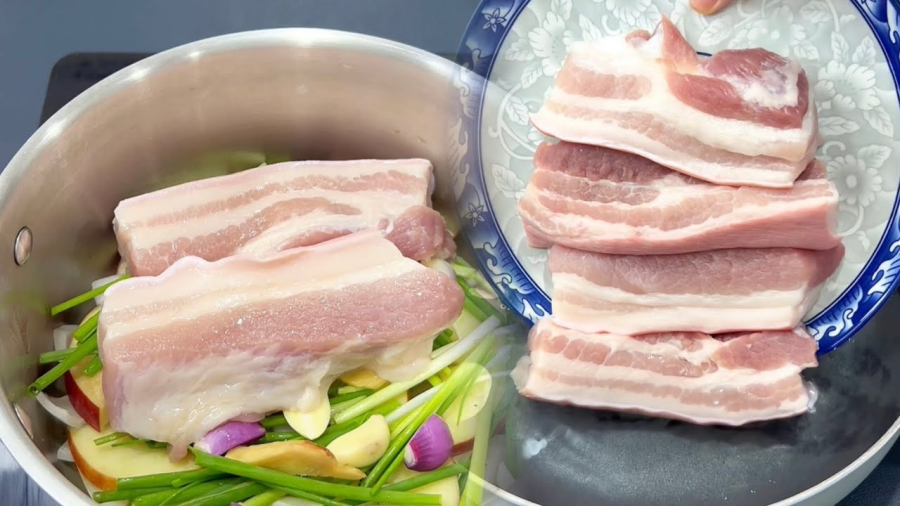Evenly cooking meat and retaining its moisture and flavor are crucial when preparing meat dishes. While it may seem logical to some that cutting meat into smaller pieces would reduce cooking time, the reality is quite the opposite. Let’s explore why boiling diced meat is not optimal and its impact on food quality.

Ingredients for Delicious Boiled Meat
1. Causes and Consequences of Dicing Meat
A common misconception is that dicing meat into smaller pieces will result in faster cooking. This seems logical as the surface area in contact with the water increases, reducing cooking time. However, the truth is quite different.
When meat is cut into small pieces, a large portion of its surface comes into direct contact with boiling water. This leads to rapid protein breakdown, causing the meat to dry out and lose its natural moisture. Consequently, the meat becomes tough and dry, losing its tenderness and inherent flavor.
2. The Importance of Meat Thickness and Size
Professional chefs often advise that maintaining a uniform size or cutting meat into moderate-sized pieces is the best way to ensure even cooking. When the meat is too small, the heat concentrates not only on the exterior but also penetrates quickly to the interior, causing the outer layers to overcook while the inside remains undercooked. This can result in dry, overcooked outer layers and unevenly cooked meat.
On the other hand, larger pieces of meat allow for slower and more even cooking, retaining moisture and tenderness. Moreover, cooking with larger pieces helps preserve more nutrients and flavor.

Tender and Delicious Boiled Meat
3. Proper Meat Boiling Technique
To ensure a delicious boiled meat dish, keep the following key points in mind:
- Choose the Right Cut of Meat: Select a piece of meat with uniform thickness to guarantee even cooking.
- Boiling Liquid: Use enough liquid to submerge the meat, and cook over low heat to ensure gradual cooking, preserving tenderness.
- Cooking Time: Regularly check the meat to prevent overcooking. Meat cooked to the right degree will be more tender and less dry.
- Seasonings and Ingredients: Enhance the flavor and appeal of the dish by adding seasonings and ingredients such as onion, garlic, and ginger.
4. Benefits of Slow Cooking
Cooking meat at a low temperature and slowly not only helps retain tenderness but also allows for a harmonious blend of flavors and spices. This process enables the meat to absorb flavors better and maintain its natural moisture. Especially for stews or long-boiled dishes, slow cooking is a technique often employed to achieve the best results.

Dicing Meat to Boil Faster
While dicing meat may theoretically reduce cooking time, it can compromise the quality of the dish. The meat tends to dry out and lose its desired tenderness, diminishing the appeal of the dish. Therefore, instead of cutting meat into small pieces, opt for slower and more consistent cooking methods to preserve its freshness and optimal quality.
Hopefully, this information will enhance your knowledge of meat preparation and enable you to create mouthwatering and flavorful dishes for your family and friends.
Grilling Chicken: How Mistakes Can Affect Taste and Well-Being
Cooking grilled chicken can be a tricky affair–one wrong move could lead to a tasteless, unappetizing dish that may even be unsafe to eat. Therefore, it’s important to understand the basics of grilling chicken and the common mistakes that can occur. In this article, we will explore the safety concerns surrounding grilled chicken and how to avoid them.



































